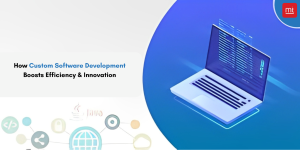5 Ways to Check Your B2B SaaS Financial Health

The SaaS market has been growing steadily over the years and is expected to keep expanding. In fact, according to Statista, the SaaS market was estimated to be worth around $197 billion in 2023. This number is projected to reach $232 billion in 2024.
What does this mean?
As the market grows, so will the competition. Fortunately, tracking your B2B SaaS company’s financial health can help you remain relevant in the competitive market.
In this article, I will explore B2B SaaS finance and highlight key metrics for monitoring your business’s financial health.
Let’s get started.
What is B2B SaaS Finance?
B2B SaaS finance includes all financial aspects and practices that keep your business operating smoothly. These financial activities include:
- Generating and managing revenue
- Financial planning and budgeting
- Managing cash flow
- Maintaining profitability
The subscription-based B2B SaaS model makes financial reporting and tracking even more complex. However, subscription management software can automate complex processes, making it easier to track your finances. You can refer to the Younium guide to learn more about subscription management.
5 Crucial Metrics to Track Your B2B SaaS Financial Health
Now that you understand what B2B SaaS finance entails, let’s take a closer look at the metrics you can use to monitor your business’s financial health.
1. Monthly and Annual Recurring Revenue (MRR and ARR)
Monthly Recurring Revenue (MRR) and Annual Recurring Revenue (ARR) can help you track revenue growth over time.
MRR is the predictable monthly income your B2B SaaS business generates from monthly subscriptions and other revenue sources.. On the other hand, ARR is the revenue your business generates annually. Monitoring MRR and ARR helps you understand revenue trends, forecast future earnings, and identify growth opportunities.
Using recurring billing software can help you easily track and manage your monthly and annual recurring revenue by streamlining invoicing and payment processes. The Attrock guide provides more insights into the best recurring billing software you can use.
2. Customer Churn Rate (CCR)
Customer churn rate tracks the number of customers who cancel their subscriptions and stop using your service for a specific duration. While it is inevitable for some customers to leave, a high churn rate can negatively impact your company’s financial health.
A high churn rate may indicate issues such as:
- Poor onboarding experience
- Unreliable customer support
- Product-market fit issues
- Integration challenges
- Evolving customer needs
Identifying and addressing the root causes of churn can help B2B SaaS companies enhance customer retention, reduce revenue loss, and fortify their financial stability.
3. Average Revenue Per User (ARPU)
ARPU measures the average revenue generated by each user or customer within a specific time frame. Tracking ARPU helps you understand the average monetary value that each customer brings to your B2B SaaS business.
Moreover, monitoring ARPU also helps you identify which subscription level yields the most profits. This way, you can adjust your pricing strategy accordingly and maximize financial growth. Here is how you can increase ARPU.
- Align your pricing with the value your software provides to the customer
- Offer multiple pricing tiers with varying features and capabilities
- Provide customization options and scalable solutions for larger enterprises
- Introduce complementary add-ons or premium features
4. Customer Acquisition Cost (CAC)
Is what you spend to secure a new customer more or less than the revenue they bring into your business? Customer Acquisition Cost (CAC) is the total cost of gaining a new customer. It includes marketing, sales, and onboarding expenses.
If you are spending more on customer acquisition than the revenue you are generating, your finances could be at risk. On the other hand, a lower CAC indicates cost-effective customer acquisition, leading to improved profitability and financial sustainability.
5. Customer Lifetime Value (CLV)
Acquiring new customers is great, but retaining them is the real challenge. A 2022 Statista survey states that great customer service influences brand loyalty in about 8 out of 10 consumers.
CLV measures the total revenue your business can expect to earn from a customer throughout their entire relationship with your company.
This means the more loyal customers you have, the higher your chances of making more profits and ensuring financial stability. Moreover, retaining existing customers can save you the costs of acquiring new ones.
Here is how you can increase your CLV.
- Create a smooth and efficient onboarding process
- Provide proactive and responsive customer support
- Ensure your SaaS solution is scalable and adaptable to changing customer needs
Bottom Line
Maintaining a healthy financial profile is vital for the long-term success of your B2B SaaS company. Tracking metrics like Customer Churn Rate, Monthly Recurring Revenue, and Customer Acquisition Cost provides invaluable insights that help your business maintain a competitive edge.
Through continuous monitoring and analysis, you can make strategic adjustments that ensure sustainable financial growth in the dynamic B2B SaaS market.






